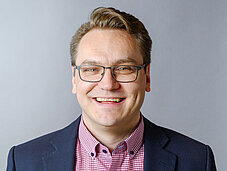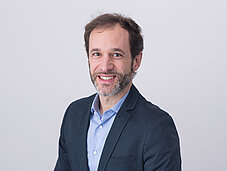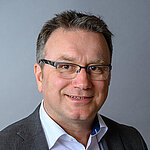
Reduced Order Models for System Simulation with Ansys
Surrogate models for different physical domains

Learn how to combine the accuracy of field simulation with the speed of system simulation for highly complex systems. This training is offered as a 2-day course.
Duration
2 days
Prerequisites
Basic knowledge of Ansys Mechanical, Basic knowledge of Ansys Twin Builder
Software used
Ansys CFD, Ansys Maxwell, Ansys Mechanical, Ansys optiSLang, Ansys Twin Builder, Model Reduction inside Ansys
- Fast system modeling of multi-physical effects
- ROM models for mechanics, electromagnetics, temperature & CFD
- Create metamodels from FEM, DoE and experimental data
- License "Model Reduction inside Ansys" for 3 months free of charge
Description
The trend for nearly all products is going in the direction of highly complex mechatronic systems whose components are developed by different departments and which must be united in an appropriate manner. One powerful tool for this is system simulation. In this training course you learn how to analyze the increasingly strong interactive effects of different components in a complex system and how to use the exchange of Reduced Order Models (ROM) and further surrogate models that, as a means of collaboration, has become increasingly important. Combine the accuracy of 3D simulations of various physical domains with the speed of system simulations. In this course you will acquire the necessary knowledge to use compact surrogate models for the representation of mechanical, electromagnetic, thermal and fluidic phenomena. Furthermore, we will deal with the creation of metamodels from experimental data.
Simulation engineers from the sectors of structural mechanics, magnetic, thermal or fluid fields learn to create and apply reduced models in their calculations. Engineers from the field of system simulation will understand, where the reduced models come from and what their physical content is. Developers and project managers working in the field of system integration learn how to use reduced order models for cooperation with development partners and customers.
Detailed agenda for this 2-day training
Day 1
01 Field and System Coupling in Ansys Twin Builder
- Methods of coupling between the physical domains
- Short Introduction Ansys Twin Builder
- Conservative and causal connections
- Workshop 1D Simple Mass Oscillator: causal and conservative modeling
02 Modal reduction for mechanical systems
- Workflow for modal reduction
- State space formulation and SPMWRITE
- Export/Import and use of state space matrices in Ansys Twin Builder - State Space Model Interface
- Scope of applications and consideration of non-linearities
- Workshop: ROM for membrane of a loudspeaker
03 Electromagnetic Reduction (ECE)
- Reducing nonlinear electromagnetic systems
- Steps for the extraction of the ECE model with Ansys Maxwell
- Scope of application and consideration of eddy currents
- Outlook to ECE for Motors
- Workshop: Reduction of an electromagnetic-mechanical actuator with eddy current area (Voice Coil)
- Workshop ECE: completion of the loudspeaker model
04 Model Order Reduction (MOR) for Thermal Systems
- Brief introduction of the Krylov-based model reduction and necessary steps
- Working with the ACT extension ‘Model Reduction inside Ansys’ (MORiA) for thermal problems
- Scope of Application (other physical domains)
- Workshop battery pack: simulation of a transient heating/cooling process with MOR inside Ansys
Day 2
05 Stationary, non-linear meta models (MOP, DX-ROM, Static ROM)
- Use of experimental and calculated data (DoE) for making ROM
- MOP-ROM and DX-ROM as a generic procedure for system description
- SVD Reduction with Static ROM for Field Outputs
- Workshop: Nonlinear and temperature-dependent shock absorber as ROM (Field and Scalar Outputs)
- Example: MOP from experimental Data using Excel OptiSLang Add-in
06 Linear time-invariant system approximation (LTI, LPV, SISO, MIMO)
- Linear, time-invariant system behavior
- Tools for LTI and SISO and MIMO system identification
- Identifying the LTI system (system response from transient flow simulation)
- Workshop LTI ROM: temperature behavior of an air-cooled battery pack
- Example: LTI ROM creation from Ansys Mechanical (MOSFET)
07 Dynamic ROM for nonlinear and transient systems
- Dynamic ROM based on artificial neural networks (AI)
- Procedure for training and generating the signals
- Workshop: Creation of a Dynamic ROM for pipe flow system
- Example: Creation of a Dynamic ROM for a heat exchanger
08 Co-simulations using FMU and Interface to 3rd Party Tools
- Opportunities and requirements for co-simulation
- Functional mockup unit or functional mockup interface (FMU / FMI) as communication interface
- Workshop: Robot arm as co-simulation between Ansys Twin Builder and the RBD Block
- Example: Valve movement with Twin Builder and Fluent
- Example: Co-simulation of an electromagnetic-mechanical actuator with Ansys Maxwell and Ansys Twin Builder
Your Trainers

Dr.-Ing. Martin Rendek

Joël Grognuz
Placement in the CADFEM Learning Pathway
Participant data
Additional information
Commentary
Whether eLearning, classroom courses, live online training or customized workshops - together we identify the best option for you.
Do you have questions on the training?
If you book through your university, you will receive a 50% discount on the stated fee on training courses and eLearning courses.
For more information on the validity and how booking with the code ACADEMIC50 works, please visit our page on training for academic users.
Straight after you sign up, an automatic confirmation of receipt will be sent to the email addresses you provided. Once you have successfully verified the data you provided, you will receive your personalized sign-up confirmation, containing further information on course fees, the billing address, etc., by email within two to three working days.
As soon as the minimum number of attendees has been reached, you will receive a final training confirmation containing further information. If you have booked an on-site training, we recommend that you wait until you have received this final confirmation before booking your travel and accommodation.
If the minimum number of attendees is not reached, we reserve the right to cancel the training seven days before it is due to start at the latest. We are happy to inform you on changing your booking to an alternative date. Please note that we accept no liability for hotel or travel bookings that attendees have already made.
Usually the training courses start at 9:00 am and end at 5:00 pm of the respective local time. The actual course times will be stated in the booking confirmation. Please note that, depending on the training host, there may be a possible time shift between your and the provider's local time. Therefore all local times are provided with the valid time shift to Greenwich Mean Time (GMT).




